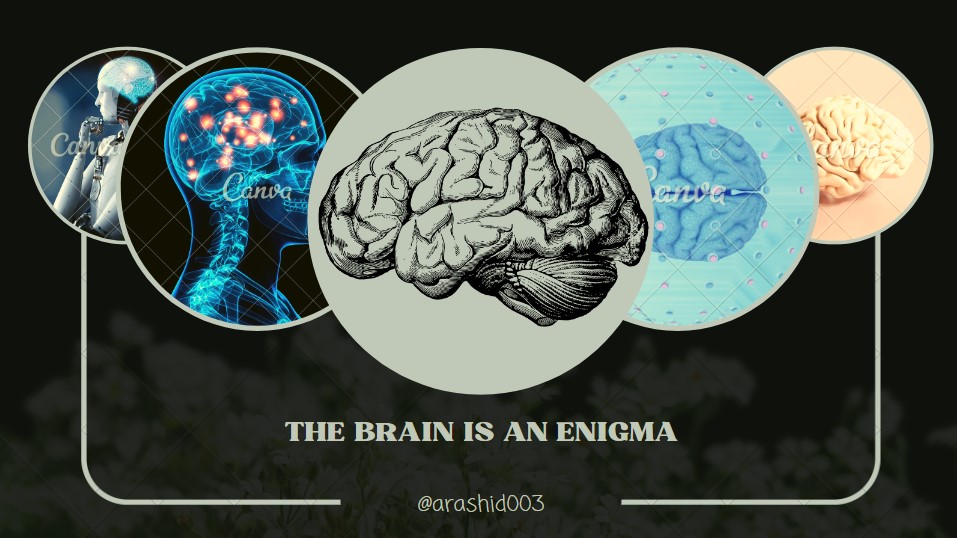The Brain Is An Enigma
As a medical student, I never got to appreciate the ability and behavior of the human brain until recently when I began to seek in-depth knowledge about it.
For a significant part of my life, I have always loved to be a Specialist Neurosurgeon even though I had still not understood much about how the nervous system works.
I had the chance to spend a few weeks at the Neurosurgery department of the Tamale Teaching Hospital (TTH) and this has helped to completely convince me about going in for Neurosurgery.
One particular thing that fascinates me so much is a part of the Central Nervous System (CNS) known as the brain, particularly the cerebral cortex.

I created this design using canva
ANATOMY OF THE CEREBRUM
In order to fully understand the anatomy of the cerebrum, it will be best to start from the outermost protective covering, the skin. The skin forms part of the five main tissue types that has to be penetrated before the skull is reached. The mnemonic SCALP is used to represent : Skin, Connective Tissue (Dense), Aponeurosis, Loose Connective Tissue and periosteum respectively.
After the Periosteum, the skull is next in line. It is made up of bones that got fused together during the developmental ages of a human. The actual coverings of the brain known as meninges is then reached after the skull is traversed. There are different layers of meninges. From the outermost, there is: the dura matter, the arachnoid matter and the pia matter which is in direct contact with the brain.
After the meninges and all the associated coverings have been removed, we now have the brain proper, with what I am focusing on, the cerebrum. A gross observation of the cerebrum reveals hills and valleys. The hills are called gyri (singular- gyrus) while the valleys are called sulci (singular- sulcus). The cerebrum is generally divided into the right and left hemispheres by the corpus callosum.
Aside the corpus callosum, additional landmarks divide each hemisphere of the cerebrum into four functionally distinct lobes. The lobes are named according to the region of the skull that lies over it. They are : the frontal, parietal, temporal and occipital lobes.
PHYSIOLOGY OF EACH LOBE
1. THE FRONTAL LOBE
The basic functions of the frontal lobe include movement, emotional control, personality, social behavior, micturition (urination) and speech specifically by an area known as the Broca's area.
2. THE PARIETAL LOBE
Most parts of the lobe are concerned with spatial awareness and also orientation. Other functions include constructional and numerical skills, and partly language abilities.
3. THE TEMPORAL LOBE
This is one of the most highly captivating lobes. It deals with auditory perception, smell, verbal and non-verbal memory, language and melody/pitch perception.
4. THE OCCIPITAL LOBE
The primary or main function of the occipital lobe is visual processing.
PATHOLOGIES ASSCOCIATED WITH THE CEREBRUM
It is important to take note of the common risk factors that lead to disorders of the cerebrum.
Traumatic injuries following Road Traffic Accidents (RTA) are a major cause of cerebral disorders. For further reading, examples of cerebral injuries which are caused by trauma include: cerebral concussion, cerebral contusion and intracerebral hemorrhage which is caused by damage to small intracerebral arteries such as the lenticulostriate artery.
Aside traumatic injuries, infections can also cause cerebral diseases. One of the ways infections could get into the systemic circulation is the use of unsterilized syringes by intravenous drug users. A common example of an infectious cerebral disease is Cerebrospinal Meningitis (CSM).
Other diseases are gotten due to congenital malformations. This is usually due to malnutrition, infections, use of teratogenic drugs and many others. All these with respect the the pregnant mother.

I created this design using canva
This is where my knowledge on the cerebrum has brought me so far. With this little being said, i hope you begin to appreciate the wonders of the brain. I will love to update you all as soon as I learn anything new.
Thank you so much for reading.